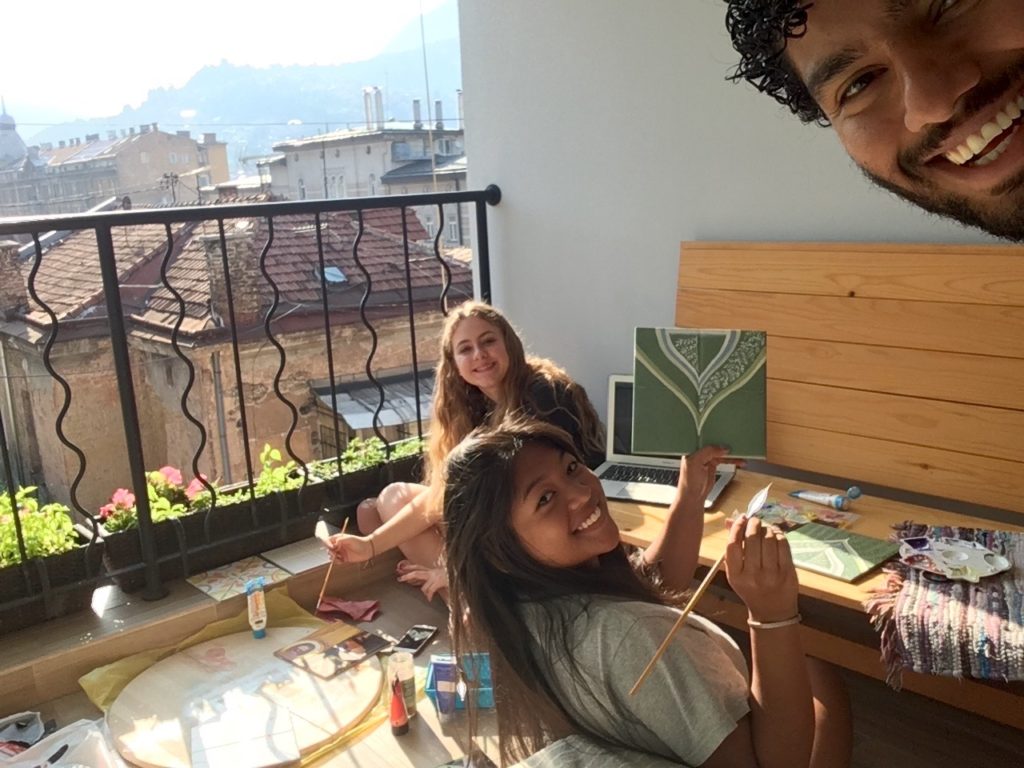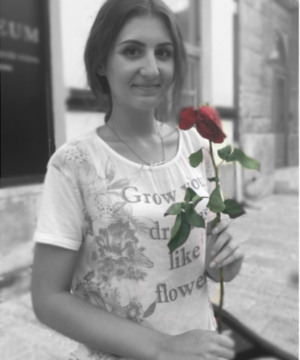Driving Question:How can we convey the complexities of ethnic and religious reconciliation through our experience of Bosnia and Herzegovina?
Students Lexie and Gigi decided to tackle an art form that was new to them for their project: crafting a mosaic. The project was filled with symbolism: breaking the tiles represented the destruction that took place during the 90s conflict. Putting the tiles back together in the shape of Bosnia showed that with hard work and time (and given that this was a new art form for the two of them, it required a lot of hard work and time), Bosnia can one again become, regardless of age, culture, ethnicity, or religion.

Lexie and Gigi visited Bosniak mosques, Serbian Orthodox churches, and Croatian Catholic churches to understand what color tiles to use in the mosaic. They learned that green is an essential color in Islam and is Muhammad’s favorite color, that Orthodox churches are often very colorful, and that Croatian Catholic churches heavily feature whites and golds.
Once they had identified color schemes and prominent designs, they created patterns based on what they had seen during their scouting process and featuring the colors mentioned above. Once the tiles were created, they smashed them into pieces (90s destruction). Next, they combined the colored elements with white tiles to form the outline of Bosnia and Herzegovina. To finish the piece, Lexie and Gigi grouted the gaps and glossed the top to make everything shine.






